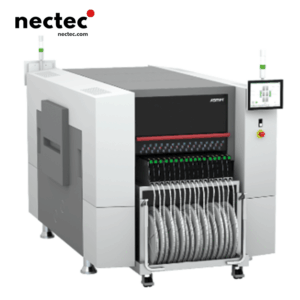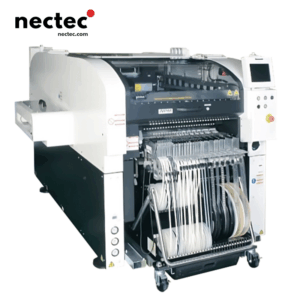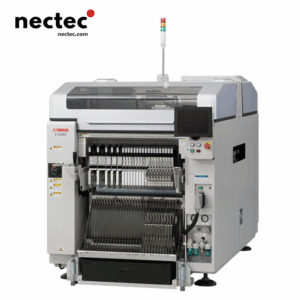In the fast-paced world of industrial automation, pick and place machines play a pivotal role in enhancing productivity and efficiency. These machines are essential for a wide range of applications, from electronics assembly to packaging. The design of a pick and place machine is not only about functionality; it is crucial to consider precision, speed, and flexibility. In this blog post, we will explore various innovative design strategies for developing state-of-the-art pick and place machines that meet the diverse needs of modern manufacturing.
The Basics of Pick and Place Machine Design
At its core, a pick and place machine is designed to pick up components from a designated area and place them onto another surface with precision. The effectiveness of this machine relies heavily on its design architecture. There are a few fundamental aspects that engineers consider while designing these machines:
- Mechanism Type: The choice of mechanism—whether pneumatic, robotic arms, or servomechanism—determines the machine’s speed, accuracy, and load capacity.
- Sensörler: Integrating sensors such as cameras, LIDAR, or infrared can significantly enhance a machine’s ability to identify and position components accurately.
- Yazılım Entegrasyonu: Modern pick and place machines require advanced software capable of visual recognition, path planning, and real-time adjustments to optimize overall performance.
Advanced Technologies in Design
With the advent of Industry 4.0, integrating advanced technologies into the design of pick and place machines is more critical than ever. This includes the incorporation of artificial intelligence (AI), machine learning (ML), and the Internet of Things (IoT).
Yapay Zeka
AI algorithms can analyze data collected from operations, adapting the machine’s workflow for optimal efficiency. For instance, by analyzing past performance data, a pick and place machine can learn the best paths for components, minimizing travel time and increasing throughput.
Makine Öğrenimi
Machine learning, a subset of AI, can facilitate predictive maintenance by understanding patterns that precede malfunctioning. This capability can lead to reduced downtime and lower maintenance costs, making the overall operation much more efficient.
Nesnelerin İnterneti (IoT)
IoT integration allows pick and place machines to communicate with other devices and systems on the shop floor. By sharing real-time data, these machines can adjust operations based on ongoing production requirements or detect anomalies that require immediate attention.
Design Elements for Efficiency
The design of pick and place machines can take several forms, all aimed at optimizing efficiency. Here are some design elements that significantly enhance machine performance:
Modülerlik
A modular design allows for easy upgrades and maintenance without complete overhaul. This flexibility means manufacturers can adapt their machines to new tasks or technologies as they arise, ensuring longevity and return on investment.
High Payload Capacity
As production needs evolve, designing machines with a high payload capacity ensures that they can handle a broader range of components. This adaptability can be particularly beneficial in industries where product sizes and weights vary significantly.
Ergonomi
While the focus is often on automation, human-factor engineering must not be overlooked. A design that considers ergonomics will not only improve operator safety but also reduce fatigue, leading to better performance and efficiency.
Software Support and User Interface
Equally critical to the success of pick and place machines is an intuitive software interface. A user-friendly design enables operators to interact with the machine easily, input necessary parameters, and adjust settings on-the-fly. Additionally, providing comprehensive software support, including tutorials and troubleshooting guides, can enhance operator confidence and machine performance.
Endüstri Uygulamaları
The versatility of pick and place machines allows them to be adapted for various industries. Let’s explore a few key applications:
Elektronik Montaj
In electronics manufacturing, precision is paramount. Pick and place machines are used to position and assemble tiny components with high accuracy, significantly improving assembly times and product quality.
Yiyecek ve İçecek Ambalajları
The food and beverage industry also benefits from pick and place technology, where machines are designed to handle delicately packaged products, ensuring they remain intact during the packaging process.
İlaçlar
In the pharmaceutical sector, compliance is critical. Pick and place machines can be designed to adhere to strict industry regulations, ensuring every component is handled and packaged correctly.
Alma ve Yerleştirme Makinesi Tasarımının Geleceği
Looking ahead, the design of pick and place machines will continue to evolve. Innovations in materials, particularly the use of lightweight composites and advanced robotics, will likely enable even more compact, versatile, and efficient systems. Sustainability will also become a central focus, with energy-efficient designs and eco-friendly materials gaining popularity as industries strive to reduce their environmental footprints.
In conclusion, innovative design strategies will help shape the future of pick and place machines. As technology advances and consumer expectations change, the demand for sophisticated, efficient, and adaptable automation solutions will only grow. By investing in advanced design principles now, manufacturers can lay the groundwork for success in the coming years.









